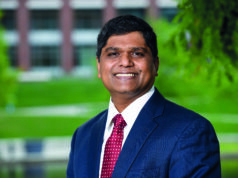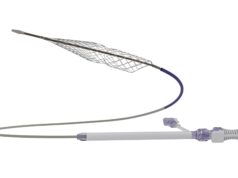
The European Diagnostics Manufacturers Association (EDMA) and the European Medical Technology Industry (Eucomed) have approved a new joint code of conduct that stipulates that, after 31 December 2017, industry should no longer provide direct “financial or in kind support” to individual healthcare professionals to cover the costs of them attending third-party medical conferences. However, the new code does say that industry can provide educational grants to healthcare organisations to enable them to pay for physicians to attend conferences.
According to a press statement from MedTech Europe (of which, EDMA and Eucomed are both members), the new code is part of “a continuous effort to set high ethical standards for the medical technology industry across Europe”. The press statement explains that EDMA and Eucomed’s current codes were, respectively, established in 2007 and 2008, and had “their own specificities, which created inconsistencies in the rules applied to the industry”. Therefore, because of a “deepening collaboration” between them, the two organisations saw a need to align their codes.
The new code, which is called the MedTech Europe Code of Ethical Business Practice, states that one of its key principles is that interaction between industry and healthcare professionals/healthcare organisations “must not be misused to influence through undue or improper advantages, purchasing decisions, nor should such interaction be contingent upon sales transactions or use or recommendation of member companies’ products.” Thus, the code provides guidelines for interacting with healthcare professionals and organisations, including how to support third-party organised educational events. It says that after a transition period (which ends 31 December 2017), industry should no longer directly support individual healthcare professionals to attend third-party organisational events. However, they will still be able to support individual physicians to attend third-party training meetings and to speak at satellite symposium.
Furthermore, under the new code, industry can provide healthcare organisations with educational grants for the purpose of supporting healthcare professionals’ attendance at third-party organised educational events. According to the code, such grants “must be provided directly to the qualifying organisation or entity” rather than an individual healthcare professional and must not be in response to a request made by an individual healthcare professional unless the individual is “an employee or officer of the qualifying organisation or entity and submits the request in writing on behalf of the qualifying organisation or entity”. It adds: “The healthcare organisation receiving the grant shall be solely responsible for selection of participants and this shall be expressly reflected in the written agreement.”
In the press statement, Rob Ten Hoedt, chairman of MedTech Europe and Eucomed, said that MedTech Europe was proud that the European medical technology industry had adopted “one of the most modern and progressive codes of conduct, with strict, clear, and transparent rules.” However, some leading European interventional cardiologists have said that they are concerned that the new code may negatively affect the future of continued medical education. Patrick Serruys (Faculty of Medicine, National Heart & Lung Institute, Imperial College, London, UK) and others write in EuroIntervention that, with the new code, “individual attendance [at medical conferences] will become more difficult with new financial models emerging through third parties such as teaching hospitals, scientific societies, congress organisers, and other institutions”. They add that costs for projects will be “questioned in greater depth, with the need to prove fair market value for all services from catering through to speaker fees.”
Serruys et al state that, during a meeting with Eucomed in October about the proposed code, they told the organisation that—without direct sponsorship of physicians—attendance at medical conferences could be “reduced by as much as 30% to 50%”. “The risks and potential harm associated with an anticipated gap in continued medical education and training will have a direct impact on patient access to care, increased risk of inappropriate use of devices, lower safety of procedures and worse outcomes,” they note.
Acknowledging that industry will provide educational grants to support (indirectly) physicians to attend conferences, the authors comment junior doctors (“especially at the early stages of their careers”), nurses, or allied healthcare professionals “may not benefit” from grants allocated to hospitals and state: “We should realise that some of these juniors will become the leaders of tomorrow and that best practices depend on teamwork.”
Responded to Serruys et al’s comments, Serge Bernasconi, chief executive officer of MedTech Europe, EDMA and Eucomed, claims that “industry is not doing this to reduce its investment in medical education” as a result of the new code. He adds: “We have to make sure that everything we do, we do with the highest standards and with the highest level of ethical business conduct. We will continue to support medical education. I am not as pessimistic as what has been said because I do believe and I want to believe that physicians are going to these interesting congresses for good scientific reasons and medical education, and consequently they will not drop off the meetings. Scientific societies that have high-quality educational conferences with a strong scientific programme, and which are run in an appropriate location, will continue to get support from industry via educational grants. The use of these grants will be restricted to the purpose that has been agreed upon by the company and the scientific society. It is now time that scientific societies realise that the model is going to change, and we are ready to collaborate with them to implement this new model.”









